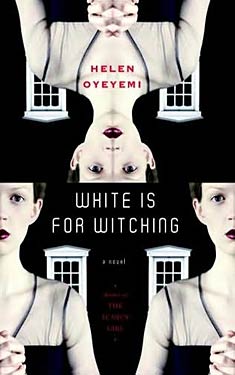Helen Oyeyemi
Completed 7/27/2014, Reviewed 7/28/2014
3 stars
I seem to be developing a pattern: Read a book.
Love it. Read an earlier book by the same author. Feel nonplussed. This happened with Helen Oyeyemi’s “White is
for Witching”. As with “Mr. Fox”, which
I loved, Oyeyemi takes a subgenre, this time the haunted house, kneads it with
her amazing prose and dark imagination, sprinkles in some magical realism and voila,
you’ve read something you never expected.
Unfortunately, when I tasted it, the ingredients were better than the
bread.
 Miranda is a near-college age teen with a rare disorder
called pica. She craves inedible things
and has to force herself to eat normal food.
She lives with her enabling twin brother and her exasperated, foodie father
in a house inherited from her deceased mother, which they’ve turned into a bed
and breakfast. Pica is genetic, and can
be traced back through several generations of women on Miranda’s mother’s
side. After her mother’s death, Miranda
had a mental collapse, and since then has ghostly encounters with her dead
female ancestors.
Miranda is a near-college age teen with a rare disorder
called pica. She craves inedible things
and has to force herself to eat normal food.
She lives with her enabling twin brother and her exasperated, foodie father
in a house inherited from her deceased mother, which they’ve turned into a bed
and breakfast. Pica is genetic, and can
be traced back through several generations of women on Miranda’s mother’s
side. After her mother’s death, Miranda
had a mental collapse, and since then has ghostly encounters with her dead
female ancestors.
The narrative is told through several characters around
Miranda. Most interestingly, one of
those voices is that of the house. The
house wants to have the same relationship with Miranda as it did with her
ancestors, which seems to include making her a permanent part of the
house. The house uses Miranda’s female
kin to achieve this end. Of course, no
one else experiences the house this way, except for the immigrant housekeepers
and some of the bed and breakfast guests.
With Miranda’s bizarre illness, food and consumption are the
dominant themes, from a poison apple to the house’s hunger for Miranda to
cannibalism. It was only in retrospect
that I realized how many different ways Oyeyemi worked the variations of
consuming into the story. The
realization made me wonder how much I probably missed in my initial reading.
The prose is lovely, but instead of enhancing the story, I
found it distracting. Combined with the
narrative style, and some toying with form, I often found myself confused as to
who was talking and when. The book is
divided into two parts, and this was particularly true in the first part. The second part was more linear and
decipherable, and downright riveting. In
reflecting on it, I had to wonder if that was the intent: a first part that
conveys the mood and setup by disorienting you, and then coming together in a suspenseful
climax.
This is definitely a worthwhile book to read. There
are many delicious quotables, for example, “…maybe ‘I don’t believe in you’ is
the cruelest way to kill a monster.” I give this book three stars, which by my star system, is still a good
book. It just didn’t meet my
expectations after a great book like “Mr. Fox”.
No comments:
Post a Comment